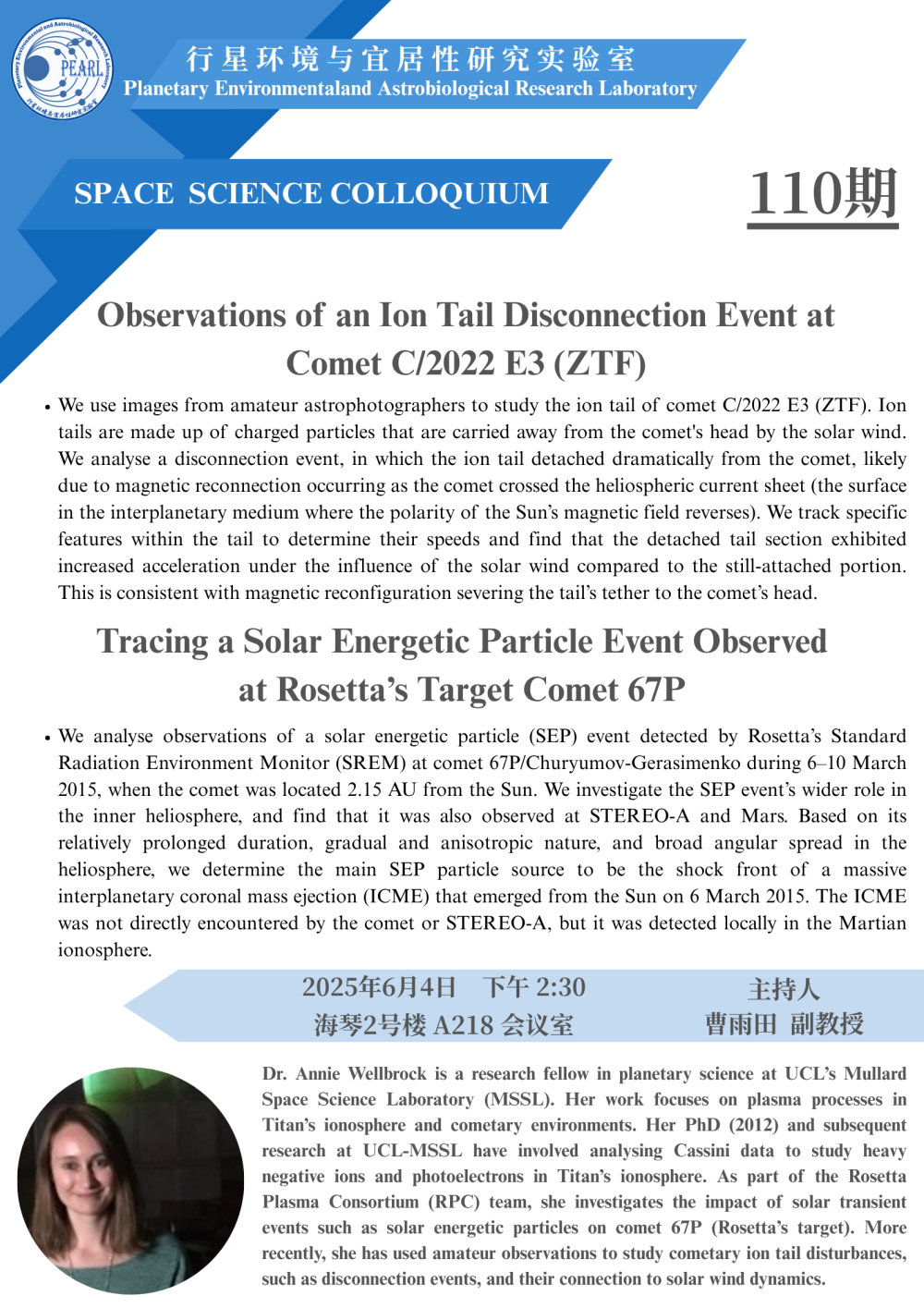Tracing a Solar Energetic Particle Event Observed at Rosetta’s Target Comet 67P
Tracing a Solar Energetic Particle Event Observed at Rosetta’s Target Comet 67P
Dr. Annie Wellbrock is a research fellow in planetary science at UCL’s Mullard Space Science Laboratory (MSSL). Her work focuses on plasma processes in Titan’s ionosphere and cometary environments. Her PhD (2012) and subsequent research at UCL-MSSL have involved analysing Cassini data to study heavy negative ions and photoelectrons in Titan’s ionosphere. As part of the Rosetta Plasma Consortium (RPC) team, she investigates the impact of solar transient events such as solar energetic particles on comet 67P (Rosetta’s target). More recently, she has used amateur observations to study cometary ion tail disturbances, such as disconnection events, and their connection to solar wind dynamics.
We analyse observations of a solar energetic particle (SEP) event detected by Rosetta’s Standard Radiation Environment Monitor (SREM) at comet 67P/Churyumov-Gerasimenko during 6–10 March 2015, when the comet was located 2.15 AU from the Sun. We investigate the SEP event’s wider role in the inner heliosphere, and find that it was also observed at STEREO-A and Mars. Based on its relatively prolonged duration, gradual and anisotropic nature, and broad angular spread in the heliosphere, we determine the main SEP particle source to be the shock front of a massive interplanetary coronal mass ejection (ICME) that emerged from the Sun on 6 March 2015. The ICME was not directly encountered by the comet or STEREO-A, but it was detected locally in the Martian ionosphere.


